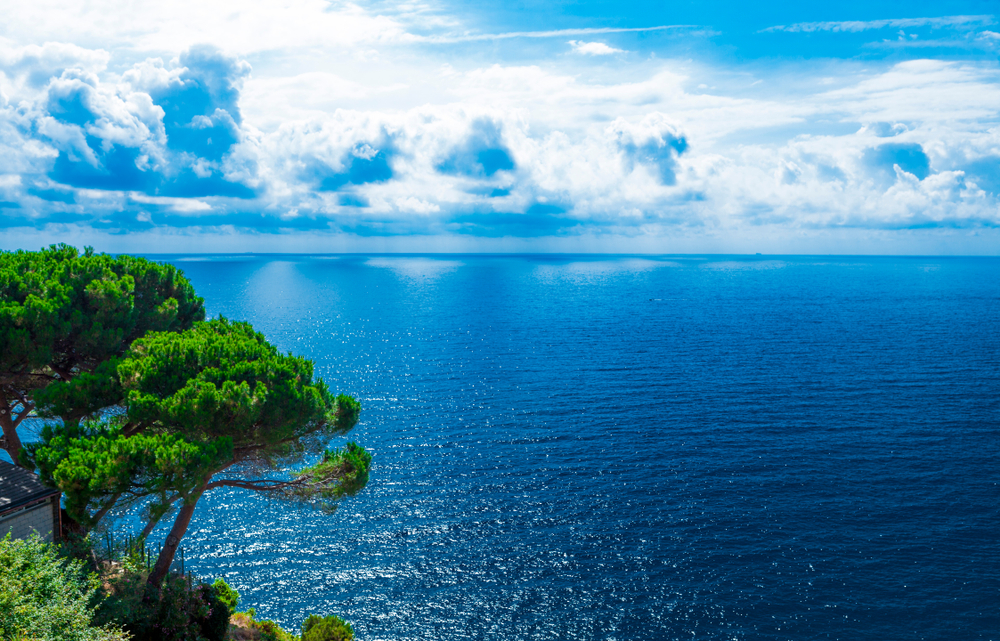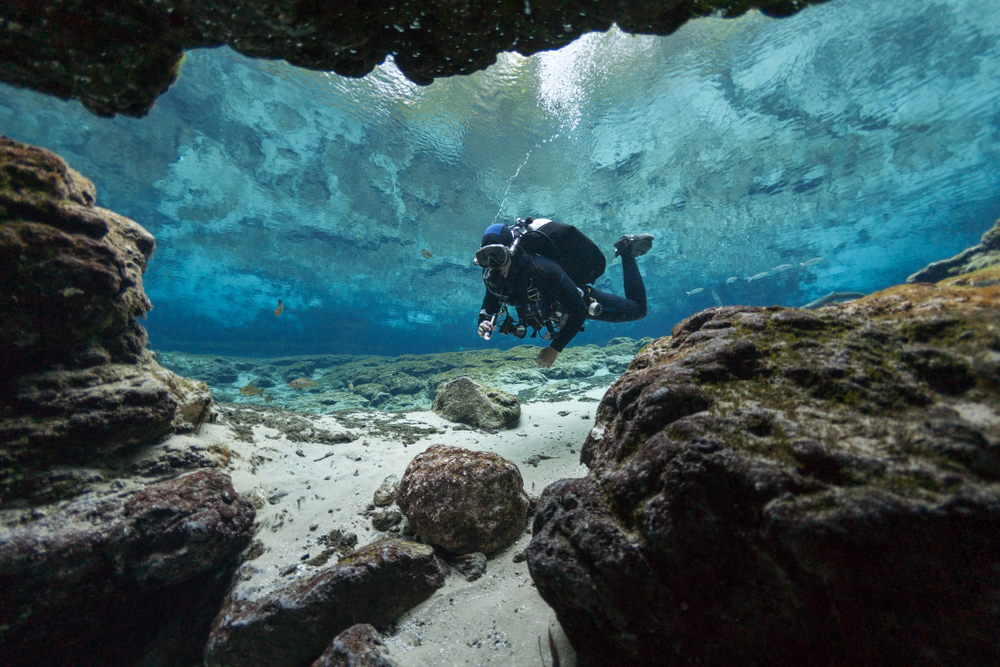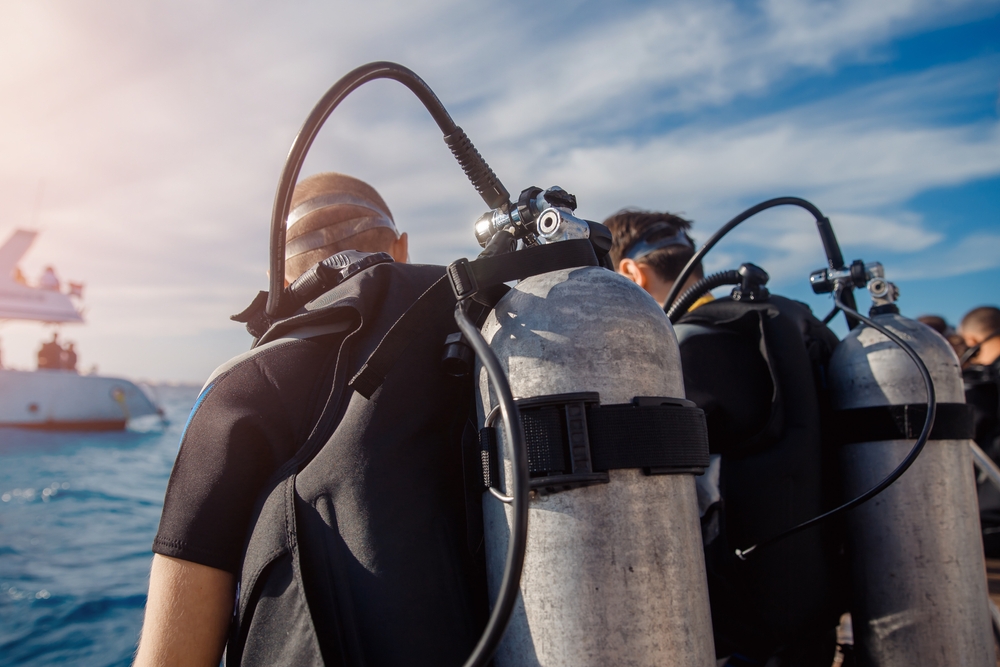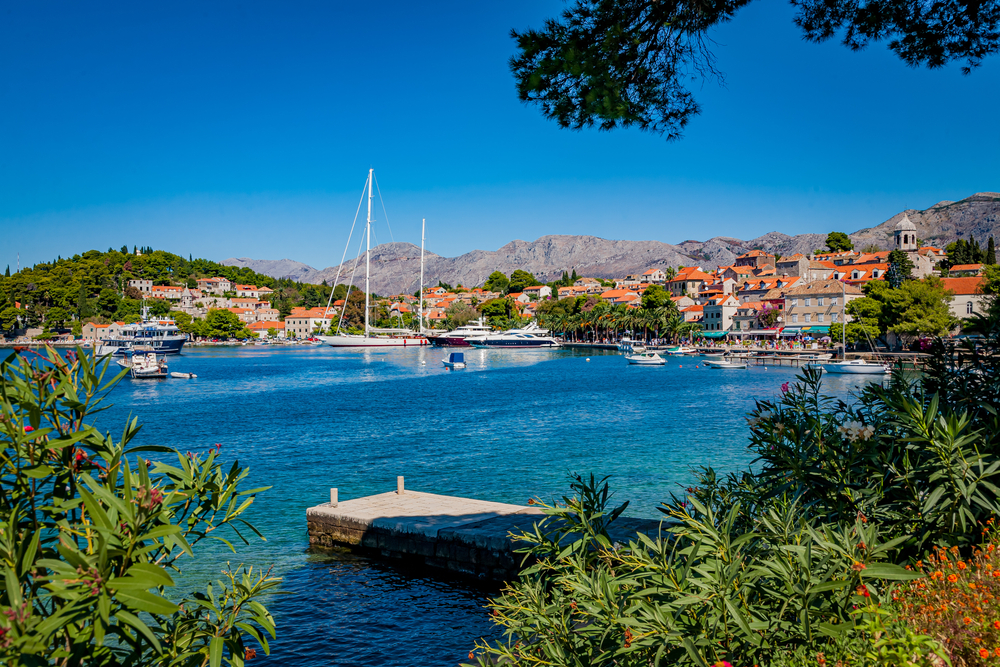The Adriatic Sea is a branch of the Mediterranean Sea and separates the Apennine and Balkan peninsulas. Its name comes from the ancient seaport of Hadria, which was founded while the Etruscans were still in power. Every year a multitude of tourists from all over the world come to the Adriatic Sea, eager for rest and relaxation. So what sets the Adriatic coast apart? What is worth knowing about it?
Adriatic Sea – beautiful beaches and clear sea
The beaches on the Adriatic Sea are considered to be among the most beautiful as well as the cleanest. Although the Adriatic Sea is only a small point in the Mediterranean, its area is still large at 138,595 square kilometers. The sea is 800 kilometers long and roughly 200 kilometers wide.
The depth, on the other hand, is about 50 meters, making it one of the shallowest seas in the world. Interestingly, currents form in the waters of the Adriatic Sea, flowing along the Croatian coast northward and along the Italian coast from north to south.
Adriatic Sea – some facts
- The water in the Adriatic Sea is quite warm, as it is up to 26 degrees Celsius during the season, which is primarily the summer months. Sea currents also form there, flowing along the Croatian coast. Interestingly, this type of coastline characteristic of Croatia is called Dalmatian.
- There is quite a contrast between the two coasts of the Adriatic Sea. On one side lies the Italian coast, which has a straight and continuous shape, and there are no islands in the area. In contrast, the coast from the Balkans looks completely different. In this location, the Croatian coast has the longest and most irregular coastline. There are a lot of islands of varying size.
- There are as many as 1,200 islands in the Adriatic Sea, but only 69 of them are inhabited. Most of them are, of course, located along the Croatian coast, which is very popular with tourists.
- Due to the fact that the Croatian Adriatic coast is considered one of the cleanest, quite a few people choose to go scuba diving. Underwater visibility is great, you can admire the most beautiful natural wonders and discover unique mysteries, such as sunken ships and underwater cave complexes.
- The Adriatic Sea has ideal conditions for water sports. Tourists come to the area to hone their windsurfing or kitesurfing skills. However, it is worth noting that these sports should be trained, only with the appropriate license or under the guidance of an experienced instructor.
- One of the more popular tourist activities is also fishing in the Adriatic Sea, mainly around the Croatian coast. Just remember that you need to have a permit for such fishing issued by the Ministry of Agriculture Fisheries and Rural Development. The permit can be obtained for a specific period of time, such as 7 days, by paying a specific fee. The license applies to amateur fishing.
- The countries that lie on the Adriatic Sea are: Italy, Croatia, Bosnia and Herzegovina, Slovenia, Albania and Montenegro. The most visited cities also include Venice, Dubrovnik, Split, Ravenna and Ancona.
Diving and the underwater world of the Adriatic Sea
The Adriatic Sea is a relatively shallow sea. North of Pula its depth does not exceed 50 m, while north of the city of Zadar, 100 m. This shaping of the bottom allows divers to swim through safely and admire the underwater world. And there is a lot to see! The Adriatic Sea is inhabited by a variety of animals.
There you can meet dolphins, some of the most beautiful specimens of cetaceans, sharks, mammals, mollusks, fish and many other living organisms. The Adriatic also has a lot of vegetation, but also crustaceans (shrimp, crabs), cephalopods (squid, octopus), and mollusks (oysters and clams).
It is worth noting that diving in the sea is really safe, if, of course, you approach the sport with reason. In these areas one will not encounter, for example, a man-eating shark or other such underwater animals that could directly threaten human life. Interestingly, research is also being conducted in the Adriatic Sea by Croats and Italians on dolphin populations.
Scuba expeditions
Due to the Adriatic’s tumultuous history and history, scuba diving expeditions, such as to shipwrecks, etc., are also organized on the coast. The bottom of the sea hides a lot of secrets that have fascinated not only historians, but real enthusiasts of this underwater sport for many years. It is interesting to note that there are as many as 100 different dive sites on the Croatian coast.
In addition, there are quite a few deposits and minerals in the Adriatic Sea. In the northern Adriatic coast, i.e. in Italy and the closest regions, modern drilling rigs are located, so that it is possible to extract, for example, oil.
Adriatic seaside resorts
Noteworthy resorts include those on the northern Adriatic coast, such as Bibione, Caorle, Grado and Lido di Jesolo. These cities are beautiful, safe and full of attractions. There is a lot of greenery, such as trimmed lawns, restaurants, hotels, apartments, water parks, so-called theme parks, and quite a variety of entertainment provided for the whole family.
1. the Adriatic – the coast of Italy
On the Italian side, the coastline of the Adriatic Sea has a straight shape and stretches for roughly 1,250 kilometers. It starts from the port of Trieste and ends at Cape Otranto. The terrain is quite distinctive. In the northern part is the Gulf of Trieste, the Po delta, the lagoon and the Gulf of Venice. The most popular ports along the Italian coast are: Bari, Ravenna, Trieste, Rimini, Ancona.
2. the Adriatic – the Balkan coast
The coastline in this part of the Adriatic is longer, irregular and varied. It amounts to roughly 2,000 kilometers. The Slovenian port of Koper is considered its beginning, and the Strait of Otranto as its end. The most popular tourist coast surrounded by islands, is the entire Croatian coast, including the Dalmatian coast. The main ports in this Adriatic region are certainly Dubrovnik, Split, located in Croatia, and Kotor in Montenegro.
Adriatic winds – information for sailors
The Adriatic coast has a Mediterranean climate characterized by warm, sunny summers and mild winters without frosts, but with rainfall and strong winds. However, the weather in these areas cannot always be predicted, so those planning a yacht charter should pay special attention to this fact.
In order to take special precautions during your cruise, it is useful to know the most characteristic winds that occur over the Adriatic Sea. Thus, in the event of a sudden change in the weather, it is much easier to assess the situation and see whether it is safe to continue sailing or whether it is more prudent to moor to the nearest port.
Tramontana – wind blowing from the north
This is a rather characteristic wind that occurs in the fourth quarter of the year. It occurs primarily when pressure drops over the Adriatic and pressure rises in the western Mediterranean. Tramontana is a cold and dry wind, usually lasting one day. Interestingly, although it heralds the appearance of nice weather in the near future, the farther away from land it is, the stronger it is. It is worth paying attention while cruising.
Levant – wind blowing from the east
It is a fairly weak wind and occurs more regularly, making it much easier to predict its arrival. Like Tramontana, Levant does not blow for more than a day and heads into the Bura or Jugo winds.
Bura (Bora) – wind blowing from the northeast
Characteristic, strong and gusty. It is a fairly common wind found in the Adriatic Sea mainly in autumn and winter, although it can also occur in summer. During the wind, water foam forms on the sea, the waves are huge and dangerous. The behemoth reaches a fairly high speed.
In 2003, its strength was measured and it was 307 km/h. The highest breezes are recorded near the coast and at the lowest points on the map. Bura (also known as Bora wind) also has several advantages, as the effect of this wind is much better visibility, improved weather and cloudless skies. It is generally accompanied by higher blood pressure.
Jugo/Sirocco – southeast wind
Jugo (otherwise known as Sirocco) most often occurs in the second quarter of the year, and is a humid and warm wind. It is accompanied by heavy cloud cover and rainfall. There are waves at sea that reach up to 4 meters high. Jugo often occurs in the summer or just before the high season, so people who want to go on a cruise should be careful.
It is accompanied by strong thunderstorms, with the strongest winds in the channels between the islands, where high waves and long waves are generated. One of the most common signs of incoming wind is the billowing clouds, which are gradually beginning to increase in number.
Lebic – southwest wind
Typical dry and warm wind, which is preceded by a very intense fog. Lebic causes a rapid and noticeable drop in pressure. It’s dangerous for sailors, so before setting sail on the Adriatic Sea, it’s a good idea to check the weather right away.
Lebic causes the formation of strong and high waves in the Adriatic Sea, which are especially found in the open bays to the southwest. Although it does not last long, it can cause many dangerous situations.
Oštro – wind blowing from the south
It is a strong, violent wind, but of short duration. It is most often found in the open sea. It is quite warm as well as humid.
Maestral – wind blowing from the northwest
One of the most sailor-friendly winds. It is called the wind of good weather. It is calm, without gusts of air, usually appears before noon, and weakens in the evening. Maestral is formed due to the temperature difference between land and sea.
On the Adriatic, it usually forms between June and September, accompanied by beautiful weather, blue and cloudless skies. What’s more, by making it a bit cooler, it’s great for soothing the heat and refreshing.
Pulenate – west wind
It appears unexpectedly, quite difficult to predict. It brings with it brief but intense rain and strong gusts. Unfortunately, in winter Pulenat can be quite dangerous because of this, especially for sailors. In summer, however, it is slightly weaker, accompanied by nice weather and clear skies.
Summary
When planning a family trip or a summer vacation with friends, opt to come to one of the resorts that are located on the Adriatic Sea. Tourists appreciate it especially for the beautiful and azure color of the water and the clean beaches located within its borders. One of the most popular attractions among visitors from around the world is scuba diving in the Adriatic Sea.
Those who love to explore the underwater world can encounter many mammals, crustaceans, mollusks there, and also opt for a scuba trip to shipwrecks. The Adriatic is also famous for its rather warm water, in the summer season its temperature reaches up to 26 degrees Celsius, so you can freely bathe in the sea and enjoy the beautiful weather.







